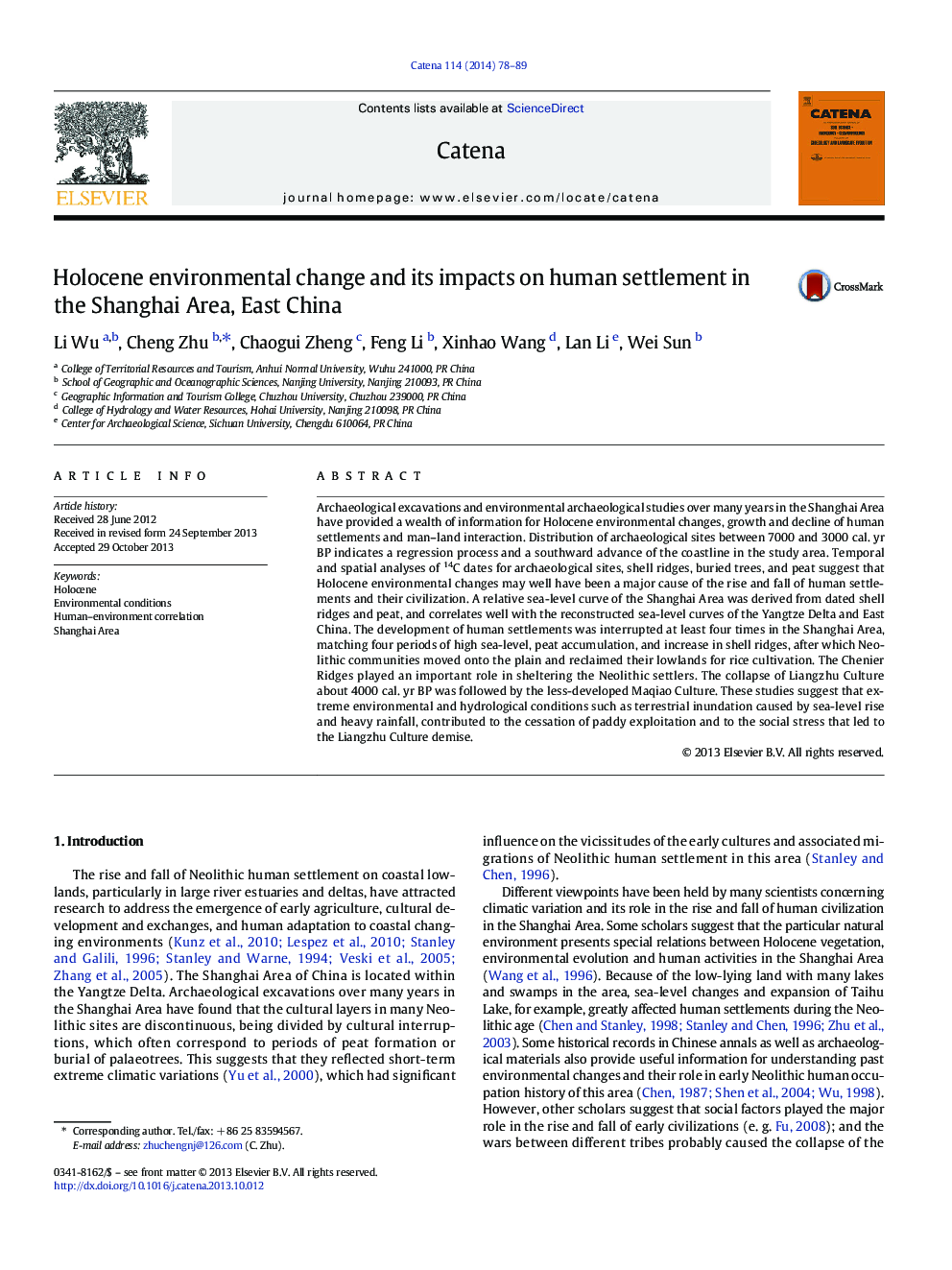| Article ID | Journal | Published Year | Pages | File Type |
|---|---|---|---|---|
| 4571493 | CATENA | 2014 | 12 Pages |
•Distribution of archaeological sites indicates coastline changes in Shanghai area.•The sea-level curve of the study area correlates well with the previous studies.•Development of human settlements was interrupted four times in the Shanghai Area.•Environmental changes exert influence on human settlements of the study area.
Archaeological excavations and environmental archaeological studies over many years in the Shanghai Area have provided a wealth of information for Holocene environmental changes, growth and decline of human settlements and man–land interaction. Distribution of archaeological sites between 7000 and 3000 cal. yr BP indicates a regression process and a southward advance of the coastline in the study area. Temporal and spatial analyses of 14C dates for archaeological sites, shell ridges, buried trees, and peat suggest that Holocene environmental changes may well have been a major cause of the rise and fall of human settlements and their civilization. A relative sea-level curve of the Shanghai Area was derived from dated shell ridges and peat, and correlates well with the reconstructed sea-level curves of the Yangtze Delta and East China. The development of human settlements was interrupted at least four times in the Shanghai Area, matching four periods of high sea-level, peat accumulation, and increase in shell ridges, after which Neolithic communities moved onto the plain and reclaimed their lowlands for rice cultivation. The Chenier Ridges played an important role in sheltering the Neolithic settlers. The collapse of Liangzhu Culture about 4000 cal. yr BP was followed by the less-developed Maqiao Culture. These studies suggest that extreme environmental and hydrological conditions such as terrestrial inundation caused by sea-level rise and heavy rainfall, contributed to the cessation of paddy exploitation and to the social stress that led to the Liangzhu Culture demise.
